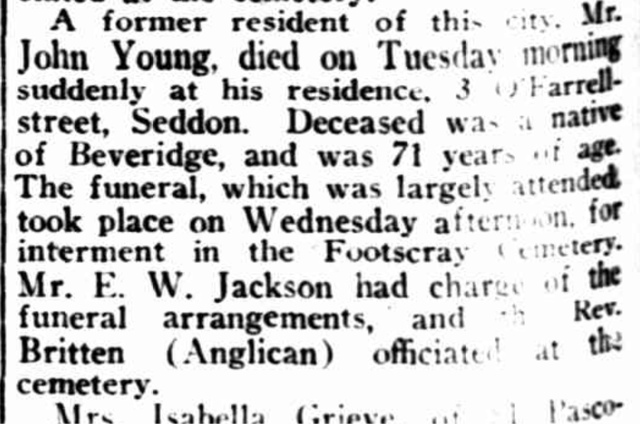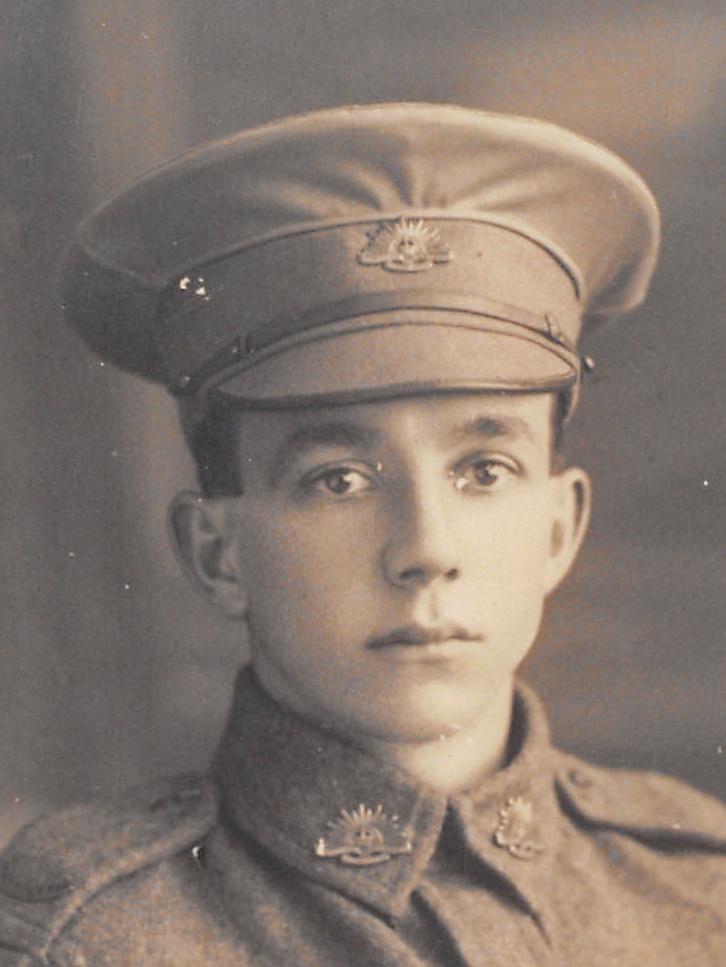My husband Greg’s great grandmother Sarah Jane Way, daughter of John Way and Sarah Daw, was born in 1863 at Barborah Creek, near Murrumburrah, New South Wales. She was the fifth of John and Sarah’s ten children. I have not been able to find Sarah’s birth registration, but when her younger sister was born about two years later, John was working as a shepherd on Brittons Dam Station, Kitticara, near Murrumburrah. He may have been working there or in the district, earlier, when Sarah was born.
By the time Sarah was about five years old the family had moved to Grenfell. When her sister Emily was born in 1868, her father John was working there as a sawyer. In 1870 Harriet was born near Reece’s Foundry, Grenfell, and John gave his occupation as sawyer. A son, John, was born in Grenfell in 1872, John gave his occupation as miner. A daughter Martha was born at Parkes in 1874; John’s occupation was consistently given as miner from 1872 for the rest of his life.
In Parkes the Way family lived on the corner of Bogan and Church streets.
On 12 July 1882 at St George’s Church of England, Parkes, Sarah Jane Way married Robert Whiteman, a miner, 42 years old from Somersetshire. Sarah Jane was not yet twenty one years old; her father John Way gave his consent to the marriage.
Robert and Sarah’s son Robert Henry was born 10 March 1883.
Sarah’s husband Robert died on 16 February 1884 of pneumonia. Six months later on 19 August Sarah gave birth to their daughter Mary Ann.
On 13 August 1894 Sarah Whiteman gave birth to an illegitimate child who was given the name Jack Walsh Whiteman. Shortly after the birth of the baby she left him in the care of her mother and sister, travelled to Melbourne, Victoria, and there married John Young, a miner, whom she had met at Parkes. John had spent six years in New South Wales.
John and Sarah Jane married in Melbourne on 26 September 1894 at 430 Bourke Street according to the rites of the Church of Christ. The marriage certificate records his address as Bowenvale near Timor, a mining settlement near Dunolly; she was staying at the Mechanics Hotel, Bourke Street.
John and Sarah Jane had three children together:
- Caroline was born in June 17895 and died of ‘debility’ on 10 July, when she was just 17 days old at Bowenvale near Timor.
- John Percy born 24 August 1896 at Bowenvale.
- Cecil born 5 July 1898 at Rokewood, south of Ballarat.
Sarah Jane died at the age of thirty-five following the birth of Cecil on 6 July 1898 at Rokewood. Her death certificate states the cause of death as childbirth and post-partum hemorrhage. She had been attended by a Dr J Raymond Fox. She was buried on 8 July at Rokewood Cemetery. Richard A White, Church of England Minister, witnessed the burial. John Young was the informant of the death certificate. He stated that his wife had been in Victoria for four years and that she had four children:
- Robert 15 years
- May 13 years
- John Percy 2 years
- Infant not named (Cecil)
The infant Caroline was not recorded and nor was Sarah’s other son, Jack Walsh Whiteman, who had remained in Parkes. Perhaps John Young did not know that his wife had given birth to an illegitimate boy; perhaps he chose not to list her son with the family in Rokewood.
Yesterday Greg and I drove to Rokewood and visited the cemetery. Several years ago I was told that the burial records had not survived, and there seems to be no gravestone. Still, the cemetery was orderly, well maintained, and peaceful among the cypresses and eucalypts. Not enough, perhaps, but all we can hope for.



I am not aware of any photo of Sarah Jane Young nee Way.
Photo colourised using the MyHeritage photo tool.








































